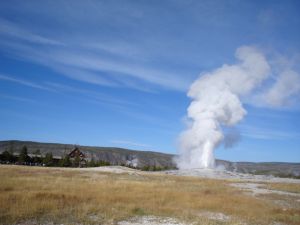Overview Section

In some cases, \(X\) and \(Y\) may both be continuous random variables. For example, suppose \(X\) denotes the duration of an eruption (in second) of Old Faithful Geyser, and \(Y\) denotes the time (in minutes) until the next eruption. We might want to know if there is a relationship between \(X\) and \(Y\). Or, we might want to know the probability that \(X\) falls between two particular values \(a\) and \(b\), and \(Y\) falls between two particular values \(c\) and \(d\). That is, we might want to know \(P(a<x<b, c<Y<d)\).
Objectives
Upon completion of this lesson, you should be able to:
- To learn the formal definition of a joint probability density function of two continuous random variables.
- To learn how to use a joint probability density function to find the probability of a specific event.
- To learn how to find a marginal probability density function of a continuous random variable \(X\) from the joint probability density function of \(X\) and \(Y\).
- To learn how to find the means and variances of the continuous random variables \(X\) and \(Y\) using their joint probability density function.
- To learn the formal definition of a conditional probability density function of a continuous r.v. \(Y\) given a continuous r.v. \(X\).
- To learn how to calculate the conditional mean and conditional variance of a continuous r.v. \(Y\) given a continuous r.v. \(X\).
- To be able to apply the methods learned in the lesson to new problems.